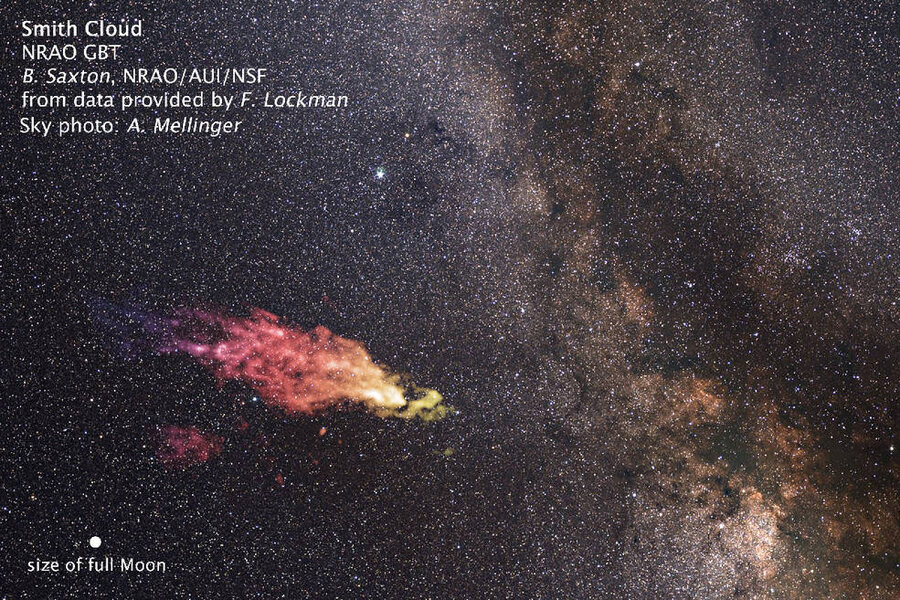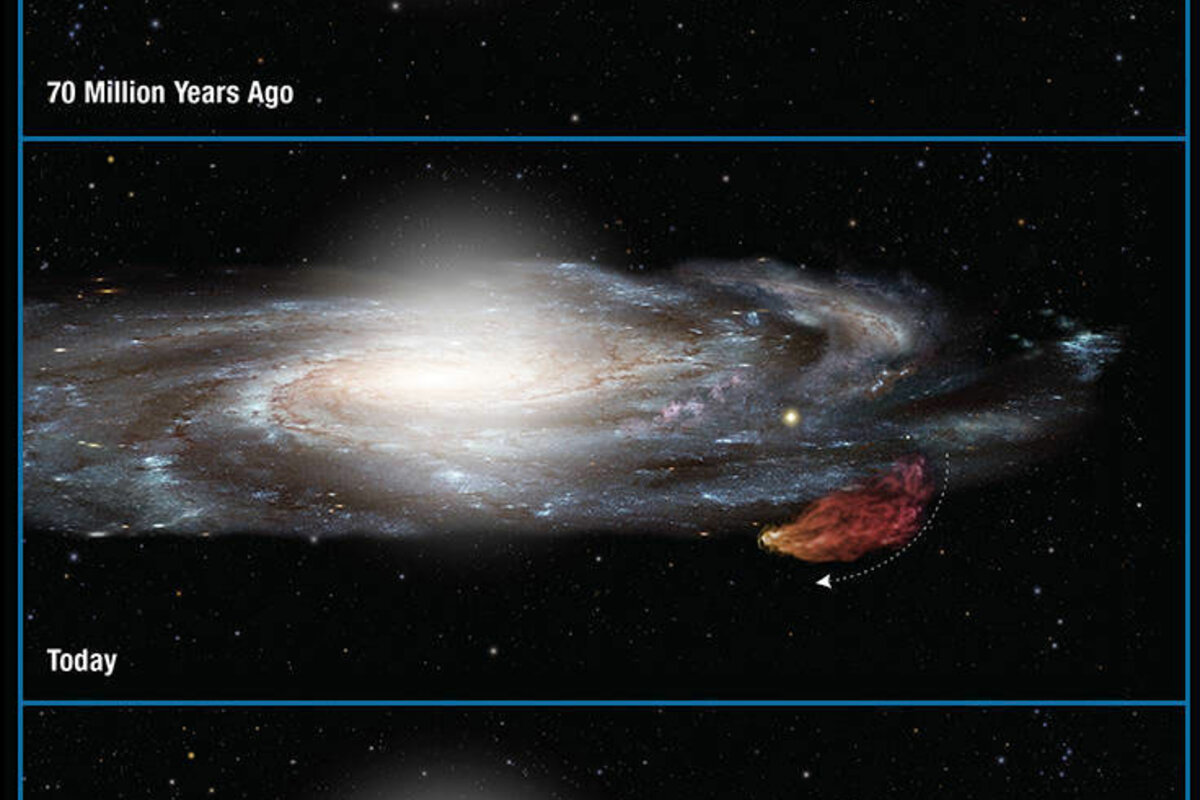Humongous gas cloud is careening toward the Milky Way: When will it hit?
Loading...
A gargantuan gas cloud is set to smash into the Milky Way, hurtling toward us at breakneck speed. Thankfully, we have some time to prepare: about 30 million years.
The enormous body, made largely of hydrogen and first discovered in the 1960s, is tearing towards us at 700,000 miles per hour, or 193 miles every second.
The twist in the tale, uncovered by a team using the Hubble Space Telescope and published in The Astrophysical Journal Letters, is that this supersonic entity is actually coming home, having once upon a time been ejected from our very own galaxy.
“The cloud is an example of how the galaxy is changing with time,” explained team leader Andrew Fox of the Space Telescope Science Institute in Baltimore, Md., in a NASA blog post. “It’s telling us that the Milky Way is a bubbling, very active place where gas can be thrown out of one part of the disk and then return back down into another.”
This particular cloud, dubbed the “Smith Cloud” after the doctoral astronomy student Gail Smith who first detected it, is unique among the hundreds of high-velocity giant gas clouds careering around the outskirts of our galaxy because its trajectory is well known.
“I think we understand more about the Smith Cloud than any other high-velocity cloud,” says Dr Fox in an email interview with The Christian Science Monitor. “This makes it a great case study for the accretion of gas onto galaxies, which is a subject of high interest in astronomy.”
Astronomers are expecting the Smith Cloud to collide with the Milky Way in about 30 million years, igniting a dazzling explosion of star formation, producing as many as 2 million new suns.
While this time frame may seem colossal, in cosmic terms it is unimpressive. Indeed, if the cloud were visible to the naked eye, it would already spread across our skies with an apparent diameter 30 times greater than a full moon.
But it was using ultraviolet light that Hubble made the new findings. By observing the light’s pathway, originating in three galaxies billions of light years beyond the Smith Cloud, they were able to determine the cloud’s composition.
“The key moment was when we realized that the Smith Cloud has a chemical composition that matches the outer disk of the Milky Way, where the interstellar gas is less enriched in heavy elements than it is near the Sun,” Fox tells the Monitor.
This discovery, in particular the levels of sulfur, meant the cloud was neither one of pristine hydrogen from outside the galaxy, nor the remnant of a failed galaxy devoid of stars. Instead, at some point, it hailed from our very own Milky Way.
Which prompts the fascinating question of what threw it into exile in the first place.
“It could have been pushed by the death of many massive stars in a Galactic fountain flow,” says Nicolas Lehner of the University of Notre Dame in Indiana, lead researcher on the project, in an email interview with the Monitor.
Alternatively, “the outer edge of the Milky Way could have been pierced by a ~100 million solar masses dark matter clump,” adds Dr Lehner.








